Comedy, disasters, crime and horror: more new releases
As mentioned in my last post, I’ve continued to revisit older movies released in new editions, double- and sometimes triple-dipping because I can’t resist a shiny new transfer and yet more disk extras. There may be a partially submerged hope that I’ll gain a new, or at least different, perspective on something familiar, but sometimes I have to admit that buying itself is a matter of habit. I’m sure this has something to do with how comfortable my life is – I don’t have challenges to overcome (other than some health issues) and I don’t have anyone else I have to answer to about where I spend my money (just this week I received a huge box of new disks from Vinegar Syndrome’s mid-year sale). I don’t think I’m trying to fill an existential void with endless distractions, but who really knows?
Arrow Video
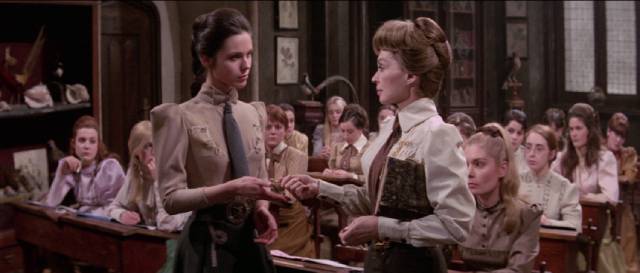
I recently picked up Arrow’s new releases of some ’70s horrors, which I enjoyed though I already had acceptable copies of all three movies on Blu-ray. That said, both Narciso Ibáñez Serrador’s The House That Screamed (1970) and Bob Kelljan’s Count Yorga, Vampire (1970) and The Return of Count Yorga (1971) are vastly improved technically in these restorations, with more substantial supplements than on the previous disks – House from Scream Factory in 2016, Count Yorga from Twilight Time and Return from Shout Factory, both 2015.
Ibáñez Serrador’s movie is elegant and atmospheric and, like his Who Can Kill a Child? (1976), eschews the sleazier tendencies of Euro-horror at the time. With its setting in a 19th Century French girls’ boarding school it leans towards the Gothic, while the story has elements of the giallo which was just then taking on a distinctive form – the students are being watched and stalked by a killer driven by twisted sexual urges which echo Norman Bates’ mother fixation in Psycho (1960). This element also provides a more explicit treatment of themes which go back to the dark family secrets and madness of the classic Gothic literature of the late 18th and early 19th Centuries.
The new disk includes both the uncut Spanish version and the shorter international cut, plus a new commentary and interviews with cast members, the writer of the original story, the director’s son, and an expert on Spanish horror.
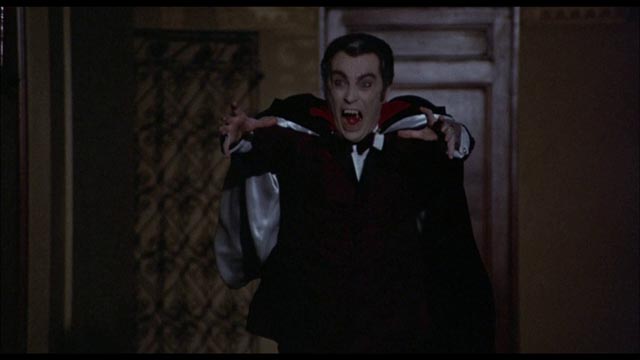
Kelljan’s two features drag a Gothic monster into the modern world, while maintaining a few period trappings by giving its ancient vampire something resembling an old castle in contemporary California and, particularly in the sequel, aligning his predatory behaviour with the very recent real-world horrors of the Manson Family murders. For a movie originally conceived as a porn quickie, Count Yorga holds up very well as a transitional work between what had become a rather creaky tradition in both the U.S. and Britain, with American-International’s Poe adaptations and Hammer’s Dracula and Frankenstein franchises, and a darker, more violent and cynical approach to horror which reflected the tone of a society on the brink of collapse after years of war, revelations of political corruption and widespread protests marked by state violence.
The two-disk set includes new and archival commentaries, along with interview featurettes about the background of the productions, the music, and the personal impact the films had on those who saw them on their original release.
*
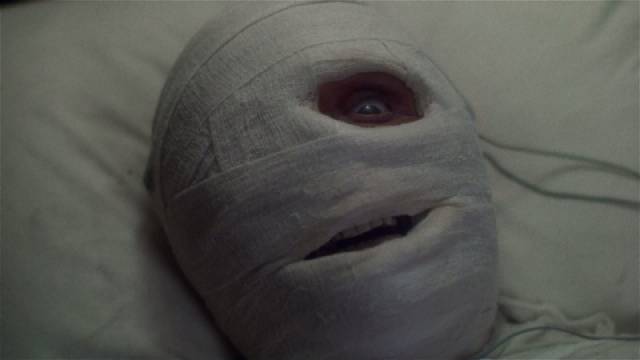
Dead & Buried (Gary Sherman, 1981)
Blue Underground’s 2021 dual-format edition of Gary Sherman’s Dead & Buried (1981) is also much improved by the new 4K restoration. Sherman had a spotty career, with this, his second feature, coming nine years after his odd, idiosyncratic debut, Death Line aka Raw Meat (1972). Like that movie, this is a small-scale horror suffused with an air of melancholy edging towards tragedy. There’s something off about the small coastal town of Potter’s Bluff, where strangers passing through find themselves targeted by the locals for brutal deaths, only to turn up later as members of the community. Unlike movies such as The Texas Chain Saw Massacre and its descendants, this has distinct supernatural overtones, though its revivified dead aren’t exactly zombies. Local sheriff Dan Gillis (James Farentino) digs into the mystery only to find himself led to a devastating personal revelation.
Packed with new and archival extras, the three-disk set (4K UHD, Blu-ray and soundtrack CD) reveals that Sherman’s original conception was undermined and corrupted by interference from the distributor, who demanded that the movie be made more conventional, simplifying the narrative and adding more sex and gore. After all, they said, they wanted a commercial horror movie, not a Bergman drama. It’s a pity Sherman’s original cut apparently no longer exists – while the film as released is a minor genre classic, it would be interesting to see what he originally had in mind.
*
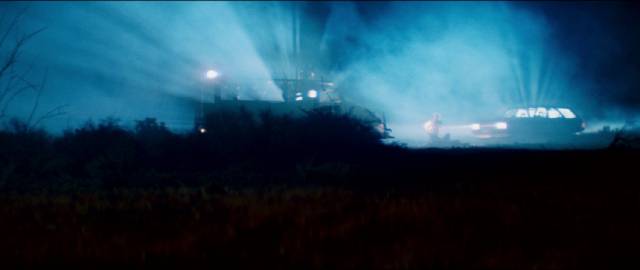
Razorback (Russell Mulcahy, 1984)
Russell Mulcahy had directed dozens of music videos before tackling his first feature, and it shows. The video aesthetic had already permeated movie-production by 1984 and the stylized visuals of Razorback – lots of colour gels and rays of light cutting through smoky darkness – perhaps work against what ought more conventionally to be a gritty slice of Outback horror. But there’s no denying the energy Mulcahy injects into this story of a monstrous natural force preying on weak (and at times stupid) humans. If William Girdler’s Grizzly was “Jaws with claws”, this is “Jaws with trotters”, the story of a remote Australian community besieged by a giant wild boar powerful enough to crush cars, destroy houses and eat people.
As in Spielberg’s classic summer blockbuster, Mulcahy wisely keeps the menacing animal as much off-screen as possible, concentrating on the effects of its attacks as we get mere glimpses of its hulking form, flashes of eyes and teeth, until it comes out into the open for the climactic confrontation. When we do see it more clearly, it’s convincing enough as an on-screen animatronic (this was made well before CGI) and we’re sufficiently invested to forgive any perceived limitations in the effects.
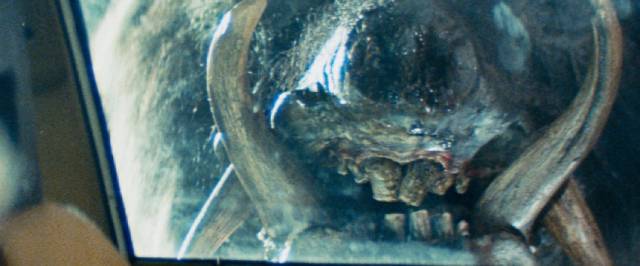
The film’s atmosphere owes something to Ted Kotcheff’s Wake In Fright (1971), the definitive classic about life in the Australian Outback, with the small town’s inhabitants crude, violent and frequently drunk. The script by Everett De Roche (a one-man genre factory in the ’70s and ’80s) even plays with audience expectations a la Psycho by setting up reporter Beth Winters (played by Judy Morris, the biggest name in the cast) as the apparent lead, only to subject her to a gruesome fate about a third of the way through, switching focus to her fiance (Gregory Harrison), who arrives in town to find out what happened to her.
The Scream Factory Blu-ray is obviously much-improved from my 2005 Umbrella DVD, duplicating most of the contents of Umbrella’s 2018 4K restoration (though for some reason eighty-four minutes of interviews culled from Mark Hartley’s Not Quite Hollywood material are missing). At the time of its original release, the music video-influenced style was seen as a flaw – too flashy – and Mulcahy had to wait for his second feature two years later to see some real commercial success. Highlander (1986) was more influential, followed by sequels and a TV series, but Razorback has since developed a cult following and gained more critical appreciation as an effective monster movie – and can be seen as laying the groundwork for a whole sub-genre of Australian rural horror.
*
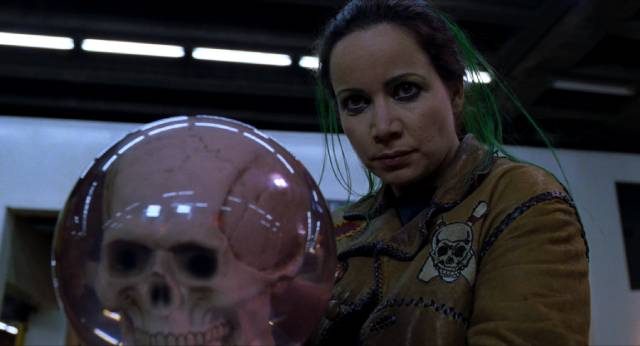
Mystery Men (Kinka Usher, 1999)
Another movie not appreciated on its first appearance, Kinka Usher’s Mystery Men (1999) was ahead of its time, a smart, funny, mocking parody of superhero movies before they came to dominate popular culture. Watching it again on 88 Films’ Blu-ray, I enjoyed it as much as I did in the theatre just before the turn of the millennium. Wildly inventive and loaded with great comic performances and visual and narrative gags, it seems more pertinent now after a decade-and-a-half of the Marvel Cinematic Universe and almost twenty years of the DC Extended Universe.
Based on a comic by Bob Burden, the film deconstructs the idea of the superhero; a group of friends, inspired by Captain Amazing (Greg Kinnear), assume secret identities to fight crime in their city, even though none of them have any actual superpowers. These identities – the Shoveler (William H. Macy), the Blue Raja (Hank Azaria), Mr. Furious (Ben Stiller) – are the hopeful fantasies of pathetic wannabes, who mostly get themselves beaten up. But they have commitment and, when villain Casanova Frankenstein (Geoffrey Rush) is released from prison and kidnaps Captain Amazing, they recruit more would-be heroes to mount a rescue mission – there’s the Bowler (Janeane Garofalo), Spleen (Paul Rubens), Invisible Boy (Kel Mitchell), Sphinx (Wes Studi), with Tom Waits as Doc Heller, who provides the team with an array of non-lethal weaponry.
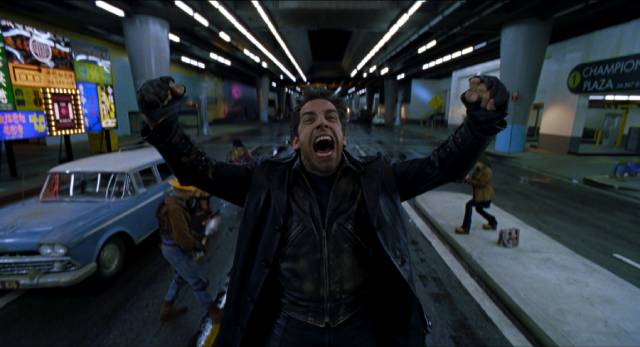
The rescue mission goes very wrong – it turns out that Amazing is an arrogant jerk who has actually made an arrangement with Casanova Frankenstein because he needs a worthy opponent to boost his sponsorship deals – and it falls to the team to find their inner superheroes to save the city. If this “believe in yourself” theme seems trite and predictable, it’s given comic life by the cast and Usher’s visual strengths and staging of the action. The movie never forgets the absurdity of the whole superhero trope and continually undercuts the risk of sliding into uplifting sentimentality.
I always wondered why Usher never made another movie – he’s had a long and successful career making commercials, with this his only feature – and the disk extras provide an answer. Apparently the shoot was such an unpleasant experience that he had no interest in pursuing a theatrical career. Between conflicts with the production company, the exhausting task of wrangling so many strong comic personalities in the cast, and the technical complexity of combining on-set action with the then quite new use of extensive digital effects, the shoot was extremely difficult. The remarkable thing is that all that effort and strain isn’t apparent in the finished film, which has a light, breezy tone, with all the performers meshing together into an entertaining ensemble. There’s so much going on, visual details and comic business, that Mystery Men remains fresh and inventive no matter how many times I’ve seen it.
*
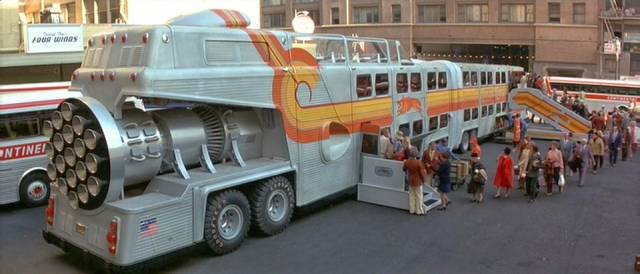
The Big Bus (James Frawley, 1976)
James Frawley’s The Big Bus (1976) is another comedy pastiche of a familiar genre – in this case, star-studded ’70s disaster movies – which is virtually note perfect. And like Mystery Men, it didn’t have much of an impact on its original release and more or less disappeared. I saw it just once back in 1976, but it left a strong impression – which made me a little wary about watching it again forty-seven years later on Kino Lorber’s new Blu-ray. I’m happy and relieved to say that it holds up quite well, managing to emulate the qualities of the genre as defined particularly by the movies produced by Irwin Allen while mocking the inherent absurdities with a sharp eye for stylistic details. I’m not sure why it didn’t have much commercial success, while the similar Airplane! was a huge hit four years later. The big difference between the two films is that the later one uses the narrative frame (an uncredited remake of Arthur Hailey’s much-adapted Flight Into Danger) to support a non-stop stream of visual and verbal gags, while the earlier one embeds the gags into a fairly straightforward disaster narrative whose inherent absurdity lies in the idea of a nuclear-powered cross-country bus.
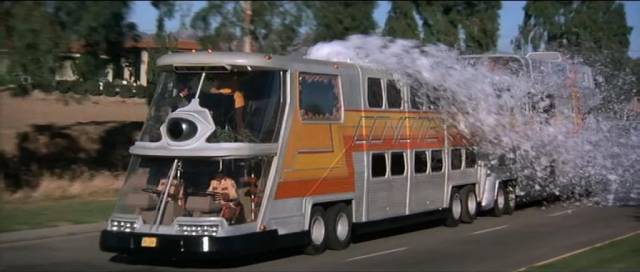
The Big Bus is filled with typical character types – naturally, the inaugural run is targeted by nefarious bad guys (Jose Ferrer and his henchman Stuart Margolin), who want to see it fail for business reasons, and a last-minute replacement driver is needed after their first sabotage attempt fails; enter disgraced Dan Torrance (Joseph Bologna), widely believed to have eaten all his passengers when his bus was caught by a blizzard in the mountains. Needless to say, the bus designer (Stockard Channing) is an old flame who doesn’t want Dan on the trip, while the passengers are the usual assortment of stereotypes with soap opera issues. With a schedule to keep and those enemies trying to sabotage the bus, there are a series of catastrophes which require the setting aside of personal conflicts, leading to a literal cliff-hanger climax.
Frawley, who had a long career in television punctuated with only a handful of features, is best-known for The Muppet Movie (1979), but in The Big Bus he displays an excellent grasp of the material and a nice balance between narrative conventions and comedy. Perhaps the problem was that the movie was made while the disaster genre was still popular – it would be a couple of years later that it began jumping the shark with duds like Irwin Allen’s The Swarm (1978), paving the way with unintentional self-parody for the outright mockery of Airplane!.
*
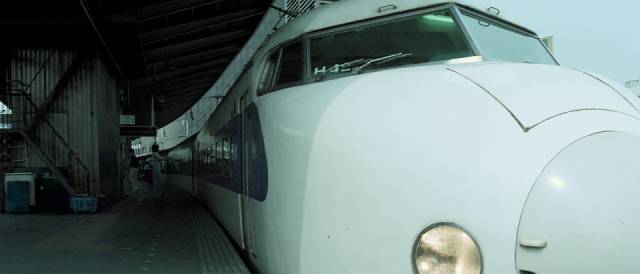
The Bullet Train (Jun’ya Satô, 1975)
Jun’ya Satô made a more straightforward disaster movie with The Bullet Train (1975), a rather leisurely thriller which seems like an obvious precursor to Speed (1994), though that film’s writer Graham Yost denies having seen the Japanese movie. Japan’s high-speed trains were still fairly new when Satô and his co-writers Ryûnosuke Ono and Sunao Sakagami came up with the story of criminals planting a bomb which would explode if the train slows down below a certain speed. Not surprisingly, the real railway company refused to offer any cooperation, so apart from some long shots of the train passing through cities and countryside, the movie makes extensive use of large-scale miniatures and studio sets to create an effective impression of the unstoppable machine.
While we spend time with the train’s crew and passengers, more attention is given to the gang and the police trying to locate and stop them. Here, the film builds an implicit critique of the current state of the country. The police repeatedly miscalculate and their determination to catch the gang disregards the escalating threat to the train, while railway employee Masaru Koga (Kei Yamamoto) fights to save the train even if it means acceding to the gang’s demands. The gang is led by Tetsuo Okita (Ken Takakura), a businessman whose small company has been ruined by the consolidation of the economy in the hands of large corporations; financial collapse has lost him his family and stripped him of hope, and his extortion plan is a way to get revenge as well as to make money.
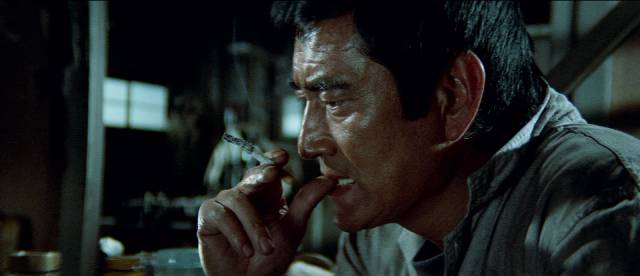
The film builds as much sympathy for Okita as it does for Koga and the train’s driver Aoki (Shin’ichi “Sonny” Chiba), while the authorities fumble and make things worse, and panic spreads among the passengers. Satô handles the interconnecting threads, the character details and moments of action, with a methodical style which seems rather old-fashioned now, but is all the better for that restraint (compare it to the exhausting, tedious flashiness of David Leitch’s like-titled Bullet Train [2022]).
Eureka’s Blu-ray, mastered from a new 2K restoration, has a significantly different look from the 2016 Twilight Time release – a cooler, bluer colour palette, but more detail in the image. There are also substantial new extras, with two commentaries, a lengthy discussion of the film from Tony Rayns, a slightly shorter conversation about the film and its director’s career between his biographers Tatsuya Masuto and Masaaki Nomura, plus an archival making-of.
*
Indicator
I continue to buy pretty much everything released by Indicator, and occasionally also pick up a few backlist stragglers when they have a sale on their site.
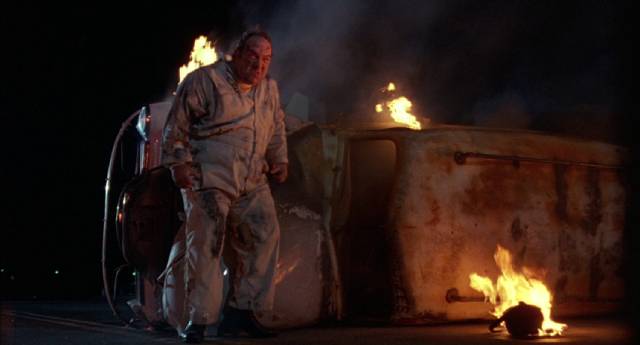
Crimewave (Sam Raimi, 1985)
One of the latter is their 2021 edition of Sam Raimi’s second feature, Crimewave (1985), which I’d seen only once before and recall not liking. I guess I bought it because Indicator had a buy-three-and-get-a-discount offer and there were a couple of others I wanted. The value of this disk is a very good hi-def transfer and, more importantly, a stack of extras which go a long way towards explaining what went wrong with what might have been a major step forward for Raimi following the surprise success of The Evil Dead (1981). That hit drew the attention of Embassy Pictures who put up a substantially larger budget than Raimi had previously worked with – in effect, this would be his first professional production. Armed with a script co-written by the Coen Brothers, he intended to make a live-action Warner Brothers-style cartoon. But things quickly went sideways…
Even before shooting began, Raimi was losing control of the project – the distributor rejected Bruce Campbell for the lead, supposedly wanting someone better known … so Reed Birney was cast. Not only did Birney barely have a pop culture presence, his persona was antithetical to Campbell’s self-aware cynicism. He plays Vic Ajax as a mild-mannered nerd who hardly registers on-screen amid the manic slapstick action. Almost as if to compensate, Paul L. Smith and Brion James overact and mug outrageously as the antagonists, a pair of exterminators who, for a price, remove inconvenient people. Ironically, the one cast member who manages to find the right tone for the movie is Bruce Campell, handed a beefed-up secondary role as compensation, playing the smarmy heel who competes with Birney for love interest Nancy (Sheree J. Wilson).
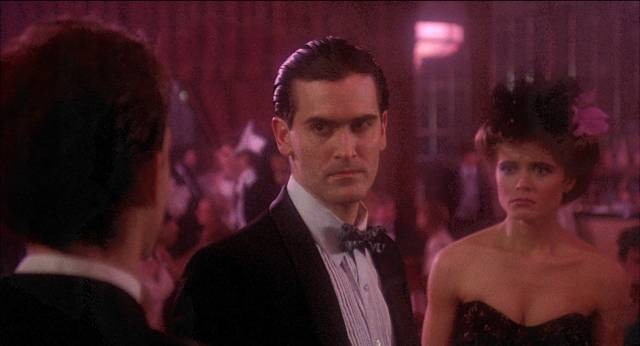
Although Gary Papierski’s design and Robert Primes’ cinematography are effective as eye candy, the movie is exhausting as only a failed comedy desperately trying to conjure up laughs can be. The pace is frantic, the music hectoring, and most of the gags land with a thud. It would be interesting to see what might have been if Raimi had been left to do It his way. Apparently the entire experience was painful for everyone involved, but as Campbell says in an interview on the disk, it was a useful learning experience – something borne out by the fact that the next project he and Raimi collaborated on was Evil Dead II (1987), which is a horror-comedy masterpiece.
The disk includes two cuts – the U.S. theatrical, and the slightly longer international (which includes three different title options) – with a pair of commentaries and a batch of interview featurettes.
*
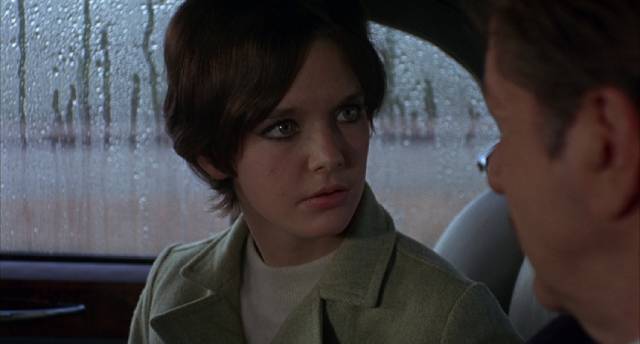
The Night of the Following Day (Hubert Cornfield, 1968)
One of my least favourite storytelling tropes is the climactic revelation that “it was all just a dream”. Having asked an audience to invest time, energy and emotion into a story, the teller suddenly says none of it matters, it wasn’t “real”, so they duped you into caring about characters and events which ultimately don’t really exist. This conflicts with the game we as viewers and readers play with creators; of course we know that none of this is actually real, but we respond for the duration of the story as if it were. By pulling the rug out from under us at the last minute the storyteller betrays our investment. While there are rare cases when this device might serve a viable narrative or psychological function, too often it’s just a reminder that we’ve been wasting our time. The latter might be exemplified by something like Adrian Lyne’s Jacob’s Ladder (1990), in which an elaborate story about demons pursuing a former soldier turns out to be a delusion flickering in his mind at the moment of death; the former by Ealing’s Dead of Night (1946), in which architect Walter Craig (Mervyn Johns) gradually realizes he’s trapped in an endlessly repeating nightmare.
One of the few times when the device hasn’t rubbed me the wrong way is in Hubert Cornfield’s The Night of the Following Day (1968), though even now I’m not entirely sure why. I first saw it on television sometime in the early ’70s, and once or twice again on TV in the ensuing decade. I didn’t see it in widescreen until Universal released it on DVD in 2004. I’ve always liked it and even now, after five decades, watching it again on Blu-ray, it has the same impact as that first time. Maybe it’s the sordid undertones of the narrative, or just the impressive cast, or the striking locations in Brittany. Perhaps it’s because Cornfield’s style owes more to a European sensibility than to Hollywood, something I wouldn’t have been aware of at the time, but which is very clear to me now – there’s a touch of Jean-Pierre Melville or perhaps Alain Robbe-Grillet in its cool detachment and existential dread. Either way, it always draws me in.
Based on a 1953 pulp novel by Lionel White, whose later Clean Break was adapted for Stanley Kubrick’s The Killing (1955), it has the gritty darkness that characterizes ’50s crime movies, though the psycho-sexual aspects of the narrative are more overt than they would have been in a movie made a decade earlier. This is amplified and complicated by the question of point of view which is rooted in that dream trope; that is, the circular structure which returns us to the beginning situates the story as the daydream of an adolescent girl who actually doesn’t have access to much of what happens, while casting all the sadism and sexual violence in a new and more disturbing light.
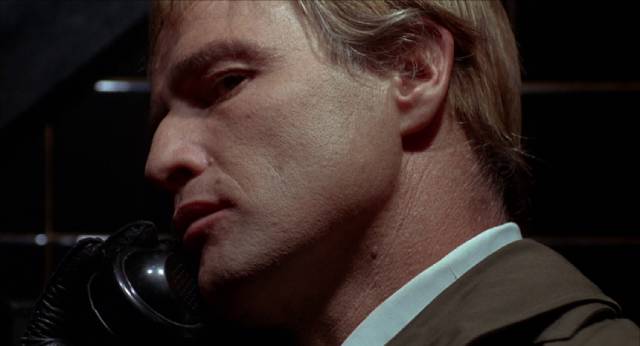
The girl, identified only as Girl (Pamela Franklin), is dozing on a plane flying into France; the flight attendant, Blonde (Rita Moreno), wakes her up to tell her they’re landing. In the airport, she’s met by Chauffeur (Marlon Brando), who drives her away in a limousine, only to stop and let another man, Leer (Richard Boone), into the car – she’s being kidnapped. They eventually arrive at a remote cottage on the coast, where they’re joined by Blonde, apparently a former lover of Chauffeur, and another man, Friendly (Jess Hahn). Leer calmly explains the situation, that she won’t be harmed and that they’ll let her go once her wealthy father has paid a hefty ransom.
As is always the case, stresses within the gang give rise to conflicts which threaten the plan … a plan, it should be said, which is absurdly complicated and could easily go wrong at any point. In addition, there’s a local cop (Gérard Buhr) who fishes from the beach and takes an interest in Blonde, turning up repeatedly at various inconvenient points during the collection of the ransom. Even worse, (spoiler) it turns out that Leer is a sexual sadist who has an unhealthy interest in the girl, leading eventually to rape and murder. The protracted climax sees Chauffeur and Leer stalking each other through the dunes, leading to violent death …
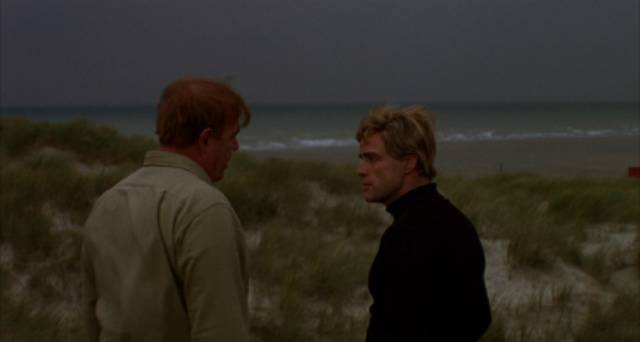
At which point we’re suddenly back on the plane with the sleeping Girl, who again is woken by Blonde and met by Chauffeur, the final image being a freeze frame of Brando’s enigmatic smile. This is where I’d normally be really annoyed – this it-was-all-a-dream thing typically negates everything you’ve just seen, making the whole movie seem pointless. But here, somehow, it suggests a psychological complication. The idea that her cruel ordeal (and apparent death) has been the Girl’s own fantasy casts a whole new light on her character … has everything we’ve just seen been a premonitory dream, a warning of what awaits her when she lands in Paris? Or is the Girl trapped in a kind of endlessly repeating purgatory in which she relives her kidnapping and brutal death? Or have we just witnessed her particularly sordid sado-masochistic fantasy? These questions are rendered more problematic because so much of the action takes place without her being present, as she’s mostly confined to a single room in the house while we follow the gang through the details of their plan and the development of their conflicts. Some of the absurdities of that plan and the ways in which is falls apart do carry the suggestion of a childlike imagination with only a limited experience of the world. But if it is her fantasy, what do we make of the brutal end she suffers?
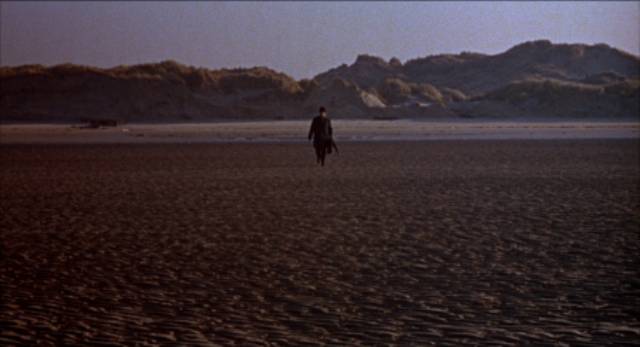
It’s partly this narrative instability which keeps the film interesting on repeat viewings – though it’s not entirely clear whether all these ambiguities were intended. The matter is further clouded by the movie’s troubled production, with antagonism between Cornfield and Brando reaching such a pitch that towards the end Richard Boone apparently took over directing to get it finished. Nonetheless, the clashing styles of the actors and the striking cinematography of Willy Kurant (who had worked with Agnes Varda, Jean-Luc Godard, Robbe-Grillet and Orson Welles among others) give The Night of the Following Day a very distinctive flavour; it plays like a meta-commentary on the crime genre whose looping structure keeps its ambiguities from ever achieving any clear resolution.
The Indicator Blu-ray, needless to say, is a huge improvement over my old DVD copy from 2004. That earlier release’s Cornfield commentary is carried over, along with a more recent hour-plus interview with Moreno covering her whole career, a featurette with film historian Neil Sinyard, who talks about the production and the film’s distinctive qualities, and a Joe Dante Trailers From Hell commentary. And as usual, there’s a booklet with a new essay, a couple of archival interviews, and excerpts from contemporary reviews.
Comments